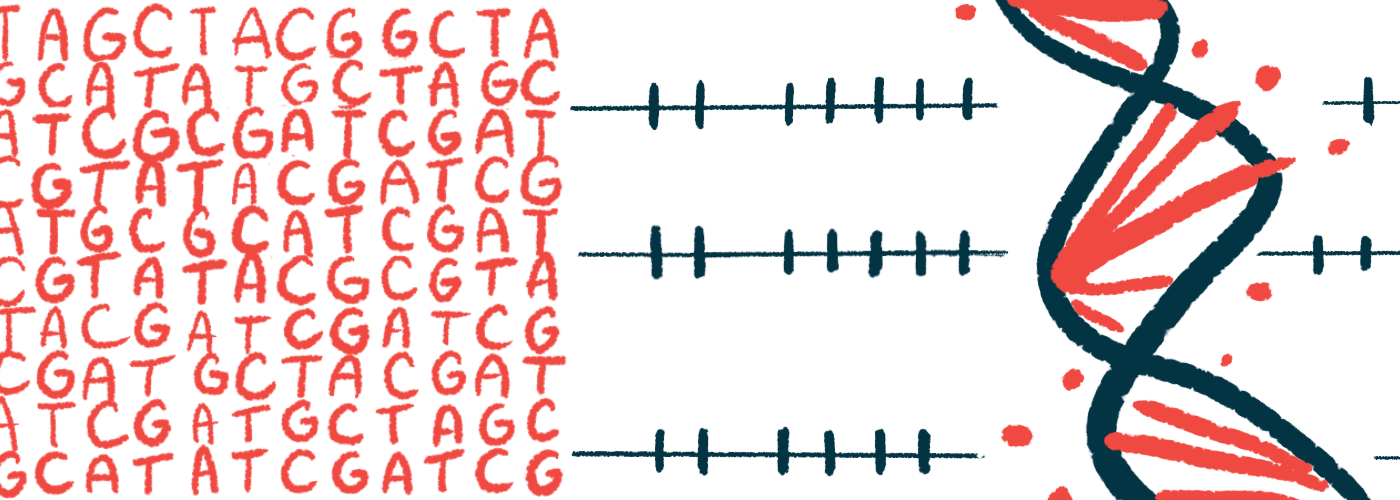Prenatal therapy extends survival in SMA mice, study finds
Base-editing treatment fixes single DNA error in gene
Written by |

A one-time treatment designed to correct a single letter, or base, in the SMN2 gene increased levels of the survival motor neuron (SMN) protein — which is lacking in spinal muscular atrophy (SMA) — and prolonged survival in a mouse model of the disease when given before birth.
The therapy achieved stronger gene editing in the liver, while changes in the brain were limited. Despite that, mice given the treatment lived longer than untreated mice and those treated after birth.
Although the researchers emphasized the need to improve brain delivery, they said the results “suggest an improvement in survival and SMA disease [features] primarily following fetal editing when compared to neonatal recipients.”
“These data also support the hypothesis that [pre-symptoms] treatment of SMA before birth would be expected to improve patient outcomes,” they wrote.
The study, “Systemic mRNA-LNP administration in fetuses improves survival in a mouse model of Spinal Muscular Atrophy,” was published in Molecular Therapy – Methods & Clinical Development.
Base editing aims to restore SMN production
SMA is caused in most cases when mutations in the SMN1 gene reduce levels of the SMN protein needed for the survival of motor neurons (specialized nerve cells that control movement). A backup gene, SMN2, can also make SMN protein, but a slight change in its DNA sequence causes its messenger RNA (mRNA) — the intermediary molecule used to build proteins — to produce a shortened, unstable version that breaks down too quickly. As a result, motor neurons are gradually lost, leading to hallmark SMA symptoms.
Current SMA treatments aim to boost SMN protein levels in motor neurons to help slow disease progression, but the burden of lifelong dosing or possible liver toxicity are noteworthy issues associated with specific therapies.
Base editing — a precise form of gene editing that changes a single DNA letter — has emerged as a promising way to more permanently restore SMN production from the SMN2 gene. Most experimental approaches so far have relied on viral delivery, which can trigger immune responses and have off-target effects, raising safety concerns.
Researchers in Philadelphia said they aimed to optimize a base-editing approach for SMA that could be safely used before birth “for early induction of SMN at a time when it is required for development.”
They used lipid nanoparticles (LNPs) — tiny, fat-like particles that protect and deliver genetic material into cells — to carry mRNA encoding a base editor.
Three LNP formulations — LNP1 (SM-102), LNP2 (ALC-315), and LNP3 (C24) — each optimized for liver delivery, were created and tested in mice. Of the three, only LNP1 enabled measurable mRNA delivery to the brain — particularly to nerve cells in the cortex, or the brain’s outer layer — when given before birth. This means it crossed the blood–brain barrier, which normally blocks most substances from reaching the brain.
Based on these results, the team loaded LNP1 with mRNA encoding the ABE8.8 base editor — the most selective of two tested in cells — along with a guide RNA designed to direct the editor to the exact spot in the SMN2 gene. The therapy was tested in an SMA mouse model before birth and shortly after.
In the prenatal group, a single dose of the therapy was injected during embryonic development. Newborn mice received the same treatment via a vein that sends blood to the scalp and face. Control mice were given LNPs containing only the base editor mRNA without the guide RNA.
Genetic analysis showed that mice treated before birth had about 30% editing of the SMN2 gene in the liver, compared with about 7% in those treated after birth. Consistent with these results, levels of full-length SMN2 mRNA and SMN protein in the liver were also higher relative to controls.
Some 2%–5% editing was detected in the brain’s cortex of mice treated during gestation, and about 1%–3% in mice treated after birth, with protein levels similar to controls.
Even with limited editing in the central nervous system (brain and spinal cord), mice treated before birth gained about twice as much weight after birth and lived longer, with a median survival of 15 days, compared with 11 days for newborn-treated and seven days for control mice.
“Despite low levels of editing in CNS organs, fetal administration modestly increased survival in SMA mice, providing a foundation for a fetal base editing approach for SMA,” the researchers wrote, adding that further optimization of the formulation will be needed to enhance delivery to the CNS and achieve a more complete disease rescue.







